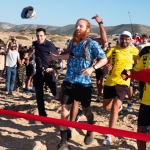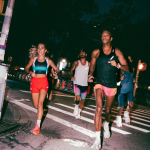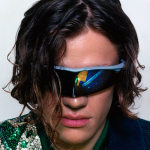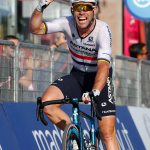
Ultra running is here to stay
Why the new sportswear grows in the woods
April 30th, 2024
A man arrives at Ras Angela, Tunisia, after walking over 16,000 kilometers from Cape Agulhas in South Africa. A woman collapses next to a yellow bar in a national park in Tennessee after nearly 60 hours of hiking. Two separate moments a few days apart and that will probably not make any noise in the sports world. Both, in fact, were two unthinkable and probably unrepeatable results, but confined within the bubble of ultrarunning. An indefinite set that represents all running activities that exceed the length of a marathon, 42 kilometers and 195 meters, usually done on dirt roads or unpaved trails. Russ Cook took almost a year to cross the entire length of Africa, passing through deserts and forests, often wearing jerseys from local soccer teams he encountered, running from 40 to 80 kilometers each day. Jasmin Paris became the first woman to finish the Barkley Marathons, one of the most inexplicable and fascinating endurance competitions in the world, where the goal is to cover over 160km lost in the woods while overcoming an elevation gain of two Everests in less than 60 hours. Paris finished only 99 seconds before the time limit.
For decades, ultrarunning has been labeled as an activity for crazy people or those who do not care about their health. After all, it is more of a philosophy of life than a real sport. In recent times, however, thanks in part to social media that are able to give a face and meaning to stories and feats that were previously almost exclusively left to oral tradition and local folklore, it is easier to understand the motivations that drive some to test the limits of the human body's endurance. Or at least to share a sense of community, of happiness in fatigue and pain even if they can't run more than five kilometers at a fast pace. And when that happens, we know very well how this trend quickly reflects on aesthetics and ways of dressing. The pandemic years may be over, when we showered with Arc'teryx shells on, but mentally we are still there: technical clothing is increasingly present in collections and in daily imagination, marking a decisive change of direction from the past.
If in the '00s the inspirations for life and consequently fashion all came from beaches, between surfing and skateboarding, now sportswear and lifestyle seem to be only attracted to unexplored mountains, pristine forests and hidden trails. As David Henry Thoreau wrote in Walden, "I went to the woods because I wished to live deliberately." Now every sportswear and fashion collection seems to follow this advice, finding where the air is cleaner and the rhythms dictated by breathing, the perfect setting to draw inspiration from. Aerodynamic sunglasses, ultra-light shoes with non-slip soles, tear-resistant and breathable fabrics, volumes that define bodies always in motion have become the protagonists in both photo shoots and competitions. A trend immediately intercepted by brands such as Vibram, Salomon, Norda, Oakley, Hoka, Merrell, Satisfy, Roa and Arc'teryx, which are creating increasingly specific, technical and high-performing materials. After all, compared to other sports, outdoor running has no specific rules or equipment, opening up a world of possibilities and customization when it comes to creating one's own gear for a race.
And ultra-running events are becoming increasingly popular, with athletes becoming real superstars capable of drawing crowds. Profiles like Kilian Jornet or Courtney Dauwalter have emerged as exciting athletes and brand ambassadors, but above all they make communities and events credible for a world to be experienced exclusively offline. In a similar way to what happened a few years ago with climbing, which suddenly became global after being the exclusive domain of dirtbags and van-lifers for decades, thanks also to films like Free Solo, ultra-running is also breaking out of its natural boundaries of trails and rocks. Compared to its more urban and respectable cousin, running, which is experiencing a real boom with communities and city groups that have created sportswear lines and cult brands over time, trail and ultra-running are the most rugged and reserved face of the sport but have managed to maintain a mythical charm and influence that shows no signs of diminishing. On the contrary, the exponential growth of outdoor aesthetics has made this experience even more malleable and permeable, not necessarily to be experienced with a stopwatch on the wrist, but also just to reconnect with nature that we are dangerously losing touch with.












